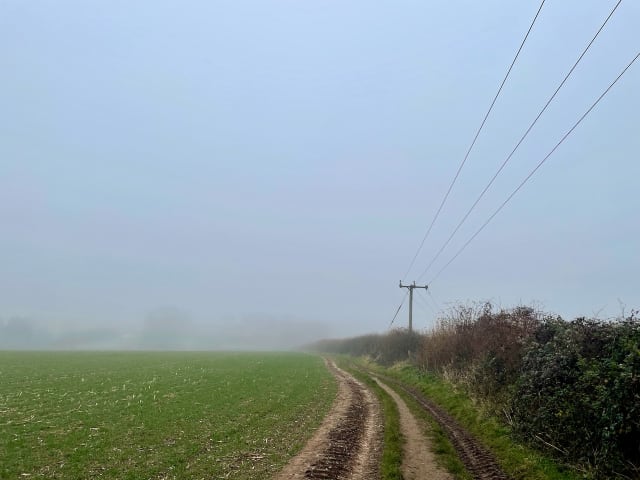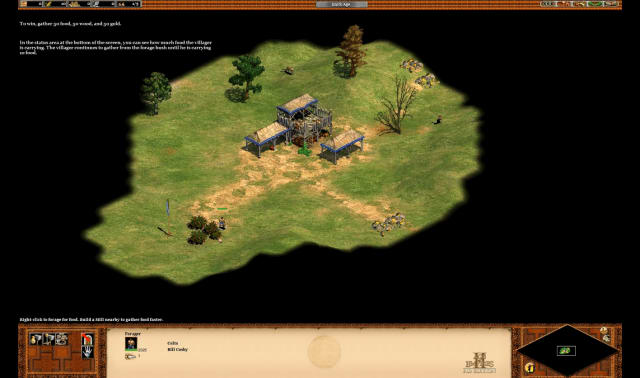Hello and welcome to my new subscribers! It’s been a while so just a quick intro to start: this is source/target, an occasional newsletter on network thinking. There’s an unsubscribe link at the bottom but I hope you’ll stick around.
This week’s edition is about zooming out, finding commonality and the surprising benefits of having a foggy outlook.
Everybody tests the membrane
When I submitted my application to become a Canadian citizen I imagined the eventual outcome to be a trip to city hall in a tie and suit, surrounded by friends, family and others who were also becoming citizens of Canada.
But after a myriad of delays due to COVID and bureaucracy I logged into yet another Zoom meeting and recited an oath in English, then French in a laggy call spanning six timezones.
Then in November I found myself back in the UK due to a family emergency for an unknown stretch of time. It had been two years since I had seen my family and it was, circumstances notwithstanding, a shock to be back. Still without my new Canadian passport in hand my plans for the future turned foggy.

When I left Canada the main news story was the devastating weather and resulting mud-slides in British Columbia. In the UK the mud-slinging was political; concerning Government officials hosting parties during a strict lockdown over a year before. Back home in B.C. it was an accepted inconvenience to flash a vaccine passport to go to pubs and restaurants. For many MPs in the UK, their potential implementation was an unacceptable overreach.
My surprise transplant back to the UK highlighted differences between two largely similar countries. With limited travel due to COVID and an over-saturation in pandemic news it’s hard to zoom out and recognize whether differences are micro (in a family or household), macro (country-wide) or somewhere in between (community differences, like the north-south divide or supposed social class).
Perhaps it’s deference to the mythical “Blitz spirit” I’ve been told about my whole life but I felt surrounded by the underlying camaraderie in England. A sort of “we’re all in this together” tough love where people band together and “get on with it.” Unfortunately, this leads to selfish contrasts, like people in shops complaining about slow queues loudly to seek allies from others in the queue whilst being the only person not wearing a facemask.
I was running in the fields near my family home and became aware of a woman up ahead waving her arms in the air. I naturally slowed as her tall, unleashed dog ambled towards me. I took my earbuds out and asked if I should be worried about the dog as she seemed concerned. She shouted back “he might attack if you run towards us” and with her headphones still in she added, “it’s *my* stranger danger, you know?”
Shared Stories
One core theme of source/target is virality. I’ve considered renaming the newsletter to “network effects.” Another theme is nostalgia, that intoxicating feeling of seeking comfort from a time, place or activity that you fondly remember.
In a vain attempt to find some kernels of universal truth I read far too many non-fiction business books last year. I shouldn’t have been surprised to find references to the same studies and, likely apocryphal, stories throughout. Take a study that demonstrates the willingness of people to allow others to cut the queue to a photocopier – even if the reason they give is completely unassuming and unremarkable “Oh I just need to use this photocopier to do some copies.” You know you need to broaden your reading horizons when a third book uses the same reference.
Tweet by Tweet
One common reference that I actually don’t mind has to do with taking things one step at a time. Here’s a quote from Anne Lamott’s Bird by Bird:
“E.L. Doctorow said once said that ‘Writing a novel is like driving a car at night. You can see only as far as your headlights, but you can make the whole trip that way.’ You don’t have to see where you’re going, you don’t have to see your destination or everything you will pass along the way. You just have to see two or three feet ahead of you. This is right up there with the best advice on writing, or life, I have ever heard.”
Here Lamott is quoting Doctorow but I also read it in On Writing by Stephen King – it’s a solid idea, even if it now feels a small step away from being a meme on Facebook.

It would be hard to build – a lot of these books don’t have standard citations – but imagine the invisible network of such ideas snaking through books and literature.
Nowadays I build websites with a refreshingly simple tool called Eleventy. It’s inspiriting due to it’s open, inclusive community of individuals building and creating and sharing. Unlike other web technologies the leaders and promoters seem to actually care about building inclusive sites and empowering others to leverage the flawed but extensive JavaScript ecosystem.

Here Zach Leatherman’s surprise echoes my other advice-givers. Just take it step by step, edition by edition, mile by mile, commit by commit.
Wooloolooo
Upon announcing his resignation as CEO of Github, Nat Eliason did a savvy burst of cross-marketing by saying he would be spending a lot of time with the new Age of Empires game from Github owner, Microsoft.
Taking the opportunity to clear out my stuff at my Dad’s home I ploughed through reels of CDs that would never be read, or ripped. Unmarked CD-Rs, scratched-up DVDs, symbols of a bygone era of ephemera. I stumbled upon a picture disc of Age of Empires and it all came flooding back. The colours, the sounds, the maps, the frantic rush to build your empire from a couple of villagers into a creaking, jerky mass of pixels; reaching bottleneck after bottleneck, limited only by your ability to plan ahead of have just enough grain for them to thrive.

In Age of Empires, you start at a random spot on a map with a small radius of visibility. You can’t see into the dark mass that is the rest of the map and – when playing with others – it’s impossible to see just how quickly they’re amassing their army and extending their encampments.
This fog of war, as it is usually described, is a game mechanic that mimics the uncertainty of warfare. Of course you can’t monitor something that you or others can’t see. Once a scout or similar unit has explored an area and left again, a “shroud” covers the area, concealing new enemy movements unless the unit returns.
Digitally concealing parts of gameplay is easier with video games than board games, although the variant of chess where the location of pieces are hidden to players was first played (with an facilitating umpire as computer) in 1899. Modern games like Battleship use it as a core meatspace mechanic via obstruction of view from the board itself. In Minesweeper the lack of visibility is the point – it’s unusual to play a game for which you could lose on first click.
Network Fog
We often talk about the desire for network graph visualizations to provide an illuminating global view of a complex cluster of connections. I respect the appeal of such global views but I’m quick to point out that the micro, local connections are where the real insights lie. What would happen if we applied this technique to the display and exploration of network graphs?
Guided search-based exploration of networks is typically via “land-and-expand” – start with a node of interest (a person, device, incident) and request any connecting details. Putting the user in control feels liberating compared to observing, say, a static bar chart but it’s like fumbling behind the back of a TV to plug in a HDMI cable without looking.
Constantly polling for fresh data and new connections is disorienting. If instead we process a network and simply peer at it through the fog we’re discovering the network as it exists.

In the online game GeoGuessr the user is dropped somewhere in the world and has to guess their location just by exploring the region via Google Street View. A fog of war network is similar – we limit our vantage point and notice the details. What is it about this node and where it exists in the wider network that’s interesting?
Think Locally, Act Globally
When the pandemic started I was overloaded by keeping track of cases, restrictions and uncertainty across Canada, England, the US and Malaysia. Refreshing the news and Twitter gives an overburden of updates leading to a sort of negative information – it’s not actionable or empowering, it’s overwhelming.
I often find myself leaning towards the comfort of what I call internal actions – reading, writing, coding or thinking that will likely never see the light of day. With internal actions there’s a fog around me and I hope that no one will intrude.
In contrast, external actions like calling a friend, posting, publishing and requesting feedback help me push through the fog from where I am but also from elsewhere on the map. For me, 2022 is the year of external actions.
